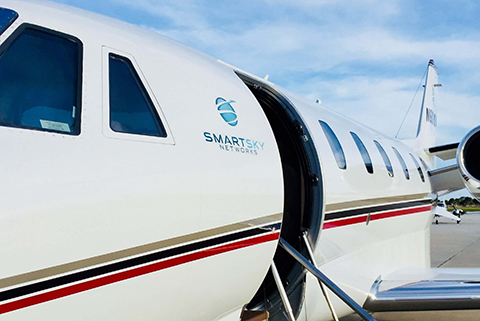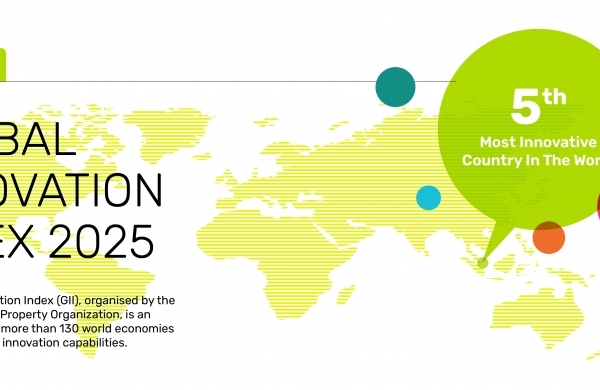Did not receive verification mail? Please confirm whether the mailbox is correct or not Re send mail

Vapor
- 2020-07-02 09:49:25
SmartSky counters Gogo's patent dispute

When Gogo filed for a review of a key SmartSky patent in April the upstart inflight connectivity company vowed to defend its intellectual property portfolio. At its core, SmartSky’s position is that Gogo chose to redefine the term “Software Defined Radio.” SkartSky also posits that much of the petition is redundant to evidence previously considered in the initial application review.
For their case to hold water, they had to first, and incorrectly, redefine a common industry standard term to suit their purpose… Gogo’s misguided redefinition of a Software Defined Radio could apply essentially to any radio made after the 1960s. We believe that is the wrong way to look at our patented invention, which is representative of advanced, modern technology.
– SmartSky President Ryan Stone
U.S. Patent No. 9,312,947 (“the ‘947 patent”) covers the use of software defined radios for beamforming to deliver continuous and uninterrupted high speed data communication to aircraft. This is a critical concept in the SmartSky network. It allows a single tower to reuse spectrum far more efficiently and massively boosts capacity within any given coverage area. This is a dramatic shift from the shared capacity design of the legacy Gogo ATG network and a big part of how SmartSky is able to drive its higher speeds to and from the aircraft.
The ‘947 patent also did not come easily to SmartSky. Indeed, the claims in the filing were initially rejected in November 2014 by the USPTO citing various prior art from other patents. Gogo’s filing relies on many of these, and similar, prior art references. SmartSky is quick to point out in its rebuttal that, because of the initial rejection of the ‘947 patent, this prior are has been considered and dismissed.
A game of words: Software Defined Radio
Is it just software, or is it a software defined radio? This seems to be the core point at dispute. SmartSky President Ryan Stone explains, “The crux of our argument is one key point: Gogo made a misguided attempt to redefine a commonly used industry term, a Software Defined Radio, in order to then argue that our patent should not be valid. Our response provides the clear and compelling evidence that Gogo’s redefinition is wrong, we provide ample evidence of the industry standard definition of a Software Defined Radio, which when applied to this case proves why our patent was, still is, and should remain valid.”
The filing itself dedicates several paragraphs to this distinction, among them:
The fundamental question becomes, is configuration of a radio to conduct beamforming using software the same thing as configuration of a radio to conduct beamforming via software defined radio?
…
Petitioner’s proposal to simply replace the term “software defined radio” with the term “software” not only oversimplifies the claim in a logically impermissible way, but also fundamentally changes the meaning of the claim in a way that is contrary to how a POSA would understand the plain and ordinary meaning of the term. In this regard, the term “software defined radio” has a well understood meaning that a POSA would not construe to be equivalent to “software.”
In prior conversations with PaxEx.Aero, SmartSky president Ryan Stone indicated that the company would aggressively defend its patent portfolio if necessary, though generally tended towards seeing it as a defensive arsenal, not an offensive one. And right now the company is playing defense. But Stone also was clear that the company would defend its intellectual property, noting that the company’s new network “required substantial innovation, as evident by SmartSky being granted, both domestically and internationally, over 150 patents along with an additional 116 pending.” (Note: more than 170 are now granted.)
What’s next?
The USPTO must now decide to either summarily dismiss Gogo’s request or to review the objections more closely. That decision is expected to come by September. If the USPTO moves forward with the review the timeline is typically a year before a decision is reached.
That timeline won’t stop either party from continuing to work on and deploy their new ATG connectivity networks, however. Both are still moving forward, though Gogo recently stated it could slow development work to conserve cash if needed.
Source:paxex.aero
Author:SETH MILLER
Editor:Vapor
- I also said the two sentence
- Also you can enter 140words
 TOP IPR U.S. Lawyers 10 & Firms 10 Selection Officially Launched by IPR Daily
TOP IPR U.S. Lawyers 10 & Firms 10 Selection Officially Launched by IPR Daily WIPO Global Innovation Index 2025: China Enters Top 10
WIPO Global Innovation Index 2025: China Enters Top 10 Singapore ranks 5th in the 2025 Global Innovation Index; climbed two spots in Innovation Outputs
Singapore ranks 5th in the 2025 Global Innovation Index; climbed two spots in Innovation Outputs Federal Circuit lacks jurisdiction over award that doesn’t raise issue of patent law
Federal Circuit lacks jurisdiction over award that doesn’t raise issue of patent law


